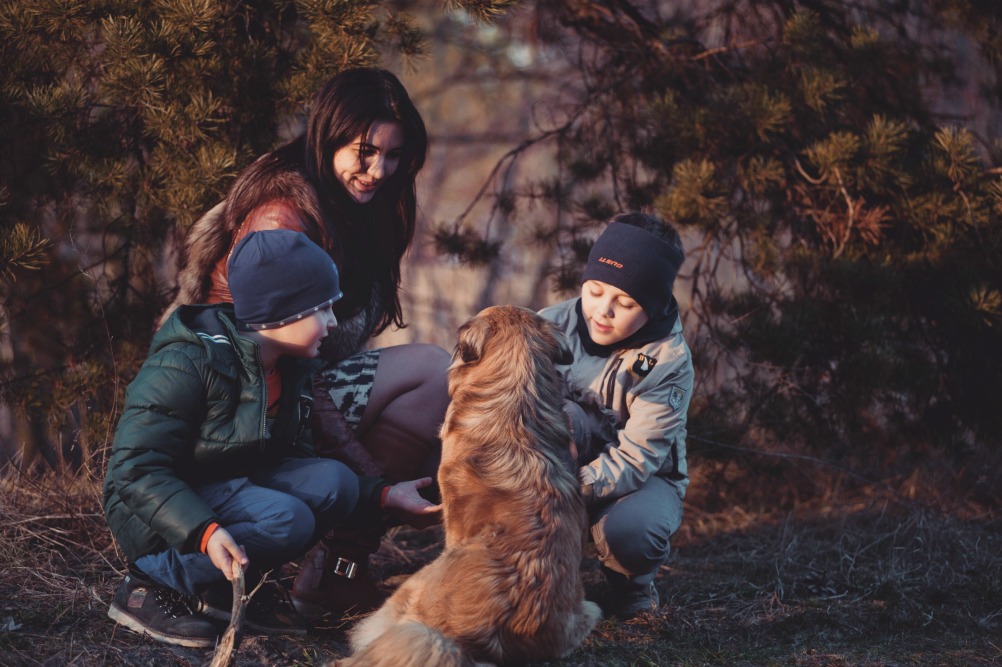My husband tells a story of when he was a boy out on the river in his family’s small boat. He was horsing around and fell into the water close to the motor’s whirling propeller. His father pulled him back into the boat, hugged him, and then laid into him—the fear so close behind the love, and the anger so close behind the fear.
Tucked deep in the folds of grey matter in the temporal lobe on both sides of the brain are the almond-shaped amygdala, the neural centers of love and fear and all that lie between. It is useful to consider love and fear as emotions located at either end of a spectrum based on how we respond in certain situations. From this perspective hate is not the opposite of love; fear is.
This changes everything.
As parents, we probably have no issue working hard to maintain healthy effective relationships with our children by steering away from and managing our feelings of anger, dislike, or hate. However, I find that it is not nearly as easy to manage fear when it is so intricately tied to love. Nor is it easy to separate the two emotions.
Fear is not a bad thing, in and of itself. One of our most important emotions, fear alerts us to dangerous situations in our environment. The amygdala fires up, the nervous system and body go into high alert, our senses sharpen, and we react instinctively to assure our children’s safety and survival. It’s a marvelous system that has kept us going for millenia. The problem comes when we have a tendency to react at the fear end of the spectrum in our parenting. This is true whether we are trying to protect or discipline our children or both at the same time.
It is helpful to ask ourselves in heated or anxious moments, “What end of the spectrum am I on right now? The love end or the fear end?”
Where is your responsiveness located on the spectrum?
Love-based |
Fear-based |
|
strengths curiosity trust compassion potential resilient opportunity flexible capable expansive motivating solution-focused resources hope empowered change agent |
uncertainty powerless worry mistrust incapable deficits problem controlling constricting limiting enabling rigidity punitive labeling helplessness |
Consider these two scenarios that typically evoke some fear:
1. You get a note from your child’s teacher who reports that your 8 year old daughter continues to exclude a particular classmate from games during recess.
Here are some variations of fears that I’ve heard from parents who have encountered similar situations and that I experienced myself when my children were growing up:
• My daughter is a bully and will grow up to be a “mean girl” or even a narcissist or
• I’m a bad parent since my child acts this way.
• There is something wrong with my child and she is never going to have friends.
• What will the teacher/other child’s parents/school principal think of me and my daughter?
2. You hear your 6th grader crying in his bedroom. When you check in with him, he begins to sob, saying, “Nobody talks to me at school, and I’m just . . . . nothing.”
Possible fears:
• My son will never have friends and will be an outcast for life.
• My son’s sadness and loneliness will spiral into depression, self-harming thoughts, or even risk of suicide.
• I’m a bad parent since my child feels this way.
• I am overwhelmed with my own frightening feelings of helplessness and worthlessness.
Fear-based responses in either scenario often foreclose on the child having a voice about his or her experiences. In the first scenario, we may want to punish and nip that behavior in the bud! Thus the opportunity is lost to explore what might be going on with the child to provoke such behavior. In the second situation, we may want to rush in and solve the problem so our child doesn’t have to suffer. Our son may get the clear message that his suffering is intolerable for us, and he then resorts to protecting us, shielding us from his pain so that we do not suffer.
Our job as parents are to protect our children from harm and to prepare our children for the dangers that they will inevitably encounter. Both movements are necessary to help them be resilient, confident, and competent. Situating our interactions on the love end of the spectrum will go a long way to fostering these qualities in our children, preparing them for the vicissitudes of the world while protecting them.
In a graduation speech I gave several years ago at our local high school, I spoke about the Love/Fear Spectrum. This is what I told the graduating seniors, and the advice holds equally true for parenting, if not more so.
Acting out of Love is effective.
Acting from Fear keeps the world ugly and mean. Of course there is much to be afraid of. We can’t get through life without having moments, maybe many moments, of Fear. The advice I give today is: Acknowledge the Fear. Then wait. Take care of yourself. Breathe. And then decide what to do, what it would be like to choose from a place of Love.
I’m not talking about a mushy push-over Love that has no boundaries. I’m speaking of ferocious, wild, oceanic, mountainous, deep rooted Love. I’m talking about Love that only the immeasurable heavens can hold.
When we look for courage in the face of Fear, we must look to Love.
When we are searching for understanding at the Wall of Anger, choose Love.
When we need strength while vulnerable—
when we seek justice in the midst of injustice—
when we look for clarity while in the tumble of chaos and confusion that comes from change—
choose Love.
As many times as we can.
About the Author: Dr Robin Barre
 Dr. Robin Barre is a depth psychotherapist in private practice in the Pacific Northwest. She aims for balance in her life by haunting coffee shops, writing, and creating art journals. You can read more about her on her website at www.theshiftlesswanderer.com. She also has a Facebook page, https://www.facebook.com/theshiftlesswanderer/, where she shares lots of wisdom, including Hey Sigmund articles.
Dr. Robin Barre is a depth psychotherapist in private practice in the Pacific Northwest. She aims for balance in her life by haunting coffee shops, writing, and creating art journals. You can read more about her on her website at www.theshiftlesswanderer.com. She also has a Facebook page, https://www.facebook.com/theshiftlesswanderer/, where she shares lots of wisdom, including Hey Sigmund articles.



When I read this, I thought of the scripture that says “Perfect love casts out all fear” & realized I’d never before questioned why it doesn’t say perfect love casts out all hate (what we normally consider the opposite of love). Hmmm…lightbulb!
I appreciate this concept very much, but in the two examples you site, you give the negative fear-based responses. What would be appropriate love-based responses to those two situations. What would acting out of love look like in those two examples? I read a lot about what NOT to do in parenting, but only get theory when it comes to what TO do. Examples of the right way to respond are equally as important as examples of the wrong way. It helps give me the words to consider when parenting in those difficult moments. Words that don’t always come as naturally as the anger and frustration. Thanks!
Hi Katie, Such a good point! Thank you for bringing it forth.
In the first scenario, a love-based response might look something like this:
Be curious first and foremost. Sit down with your daughter with a snack after she gets home from school. Make the time and the space to really work through the issue and begin a conversation – rather than a lecture.
“I heard that you are having a hard time at school during recess with So-and-So. What’s going on?” with an even appropriately concerned tone. Ideally you will have taken some deep breaths after getting the notice and are putting the parental judgements aside for the meantime. And then go from there.
Your daughter may report that the other child is mean, cheats, won’t play by the rules, wants to boss everyone around. Or it may be that other children started the trend and your child went along with it. Whatever the case may be, it’s a prime teaching opportunity. So rather than punishing or giving a negative consequence right off the bat, find out what’s going on and move to problem-solving if possible or implement a respectful, relevant, reasonable, helpful consequence if necessary.
In the second scenario, I would hold off on the curiosity for awhile. Being with your child in those moments can be very powerful. Let him know that you understand how hard this can be, that you’ve been in this place before yourself – in some way or another. Let him know that you see and hear his hurt, and that you love him still. Tell him these four powerful words suggested by Thich Nhat Hahn – “I’m here for you.” The desire is to go right to the problem solving or the reassuring. That can come later but first being with him in that difficult place is going to be a powerful move. If you saw the movie “Inside Out,” Sadness does just this with Riley’s imaginary friend Bing Bong. It’s a brilliant scene.
Hope this helps and thanks again for the feedback!
This article is so useful! I’ve been struggling with managing my own (universal, human) fear in order to parent from love, and this helped frame my thinking. Very grateful for your writing.
Thank you for your kind words, Laura. So grateful that my words landed in just the right spot!
This is so beautiful! My son and I are working on anger as the tip of the iceberg and the myraid of emotions that lie beneath the surface that are the real root. We haven’t taken it a step further to talk about balancing anger/fear with love. But in fact, talking about the root, airing the anger, both are a form of love themselves. Now if we can flip the switch to let love win out, well… win-win!!!!
Ah, this does my heart good. It can be hard work, but as I often say, “What other work is there?!” You both will be so grateful in the long run from the sticking-to-it and managing the fear – which is so often lurking beneath the anger. Many blessings as you navigate this work.